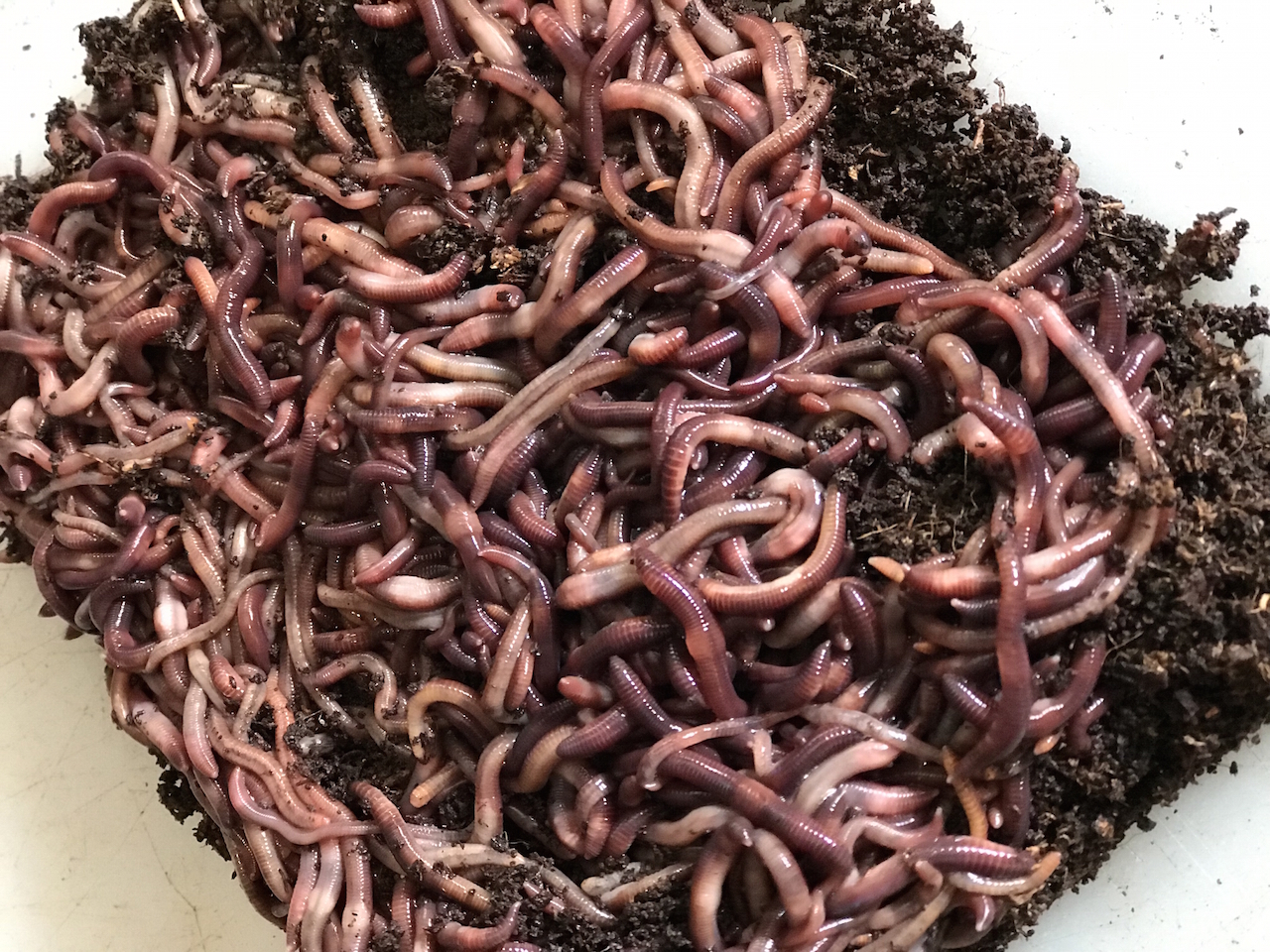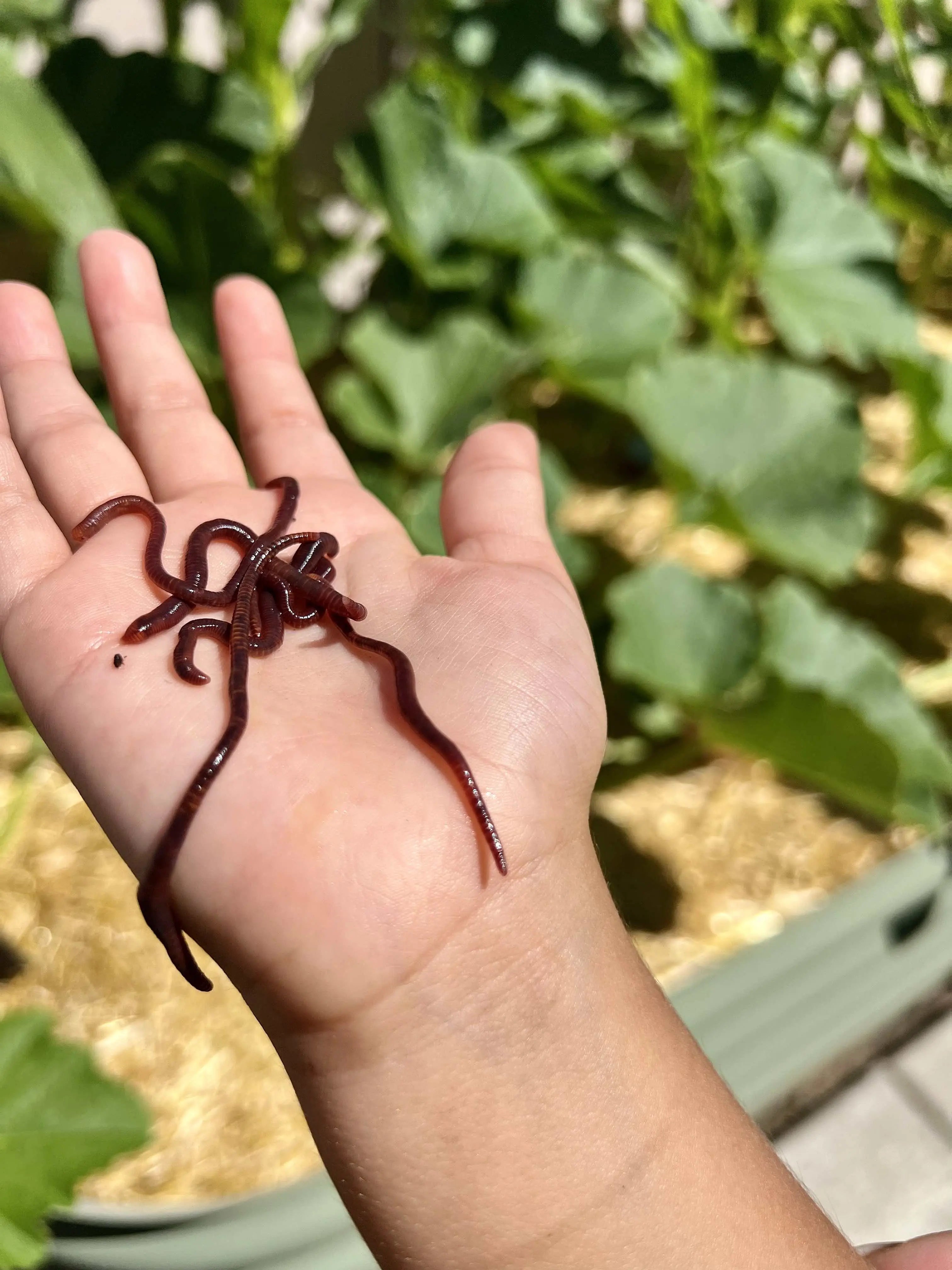Red Wiggler Worms - Natural Solution for Environmentally Friendly Composting
Red Wiggler Worms - Natural Solution for Environmentally Friendly Composting
Blog Article
Optimizing the Perks of Red Wiggler Worms: A Comprehensive Guidebook for Home Gardeners and Urban Farmers
In the world of lasting gardening techniques, red wiggler worms stand as unrecognized heroes, silently transforming natural waste into nutrient-rich spreadings that can work wonders for dirt health. As home gardeners and metropolitan farmers increasingly seek cost-efficient and ecologically pleasant means to enhance their yards, the possible benefits of utilizing the power of red wigglers can not be overemphasized. From decreasing kitchen area waste to growing much healthier plants, the utilization of these humble creatures uses a huge selection of benefits. By discovering the complexities of exactly how to successfully look after and optimize the advantages of red wiggler worms, people can unlock a wealth of chances for boosting the sustainability and productivity of their gardening ventures.
Comprehending Red Wiggler Worms
Red Wiggler worms, renowned for their effective composting abilities, are a types of earthworms extensively utilized in vermiculture methods. These worms, clinically referred to as Eisenia fetida, flourish in decomposing natural material, making them suitable candidates for composting (Red Wiggler Worms). Red Wigglers are starved eaters, qualified of eating their own weight in natural waste daily. Their digestive process breaks down raw material into nutrient-rich spreadings, which are a valuable resource for improving dirt and promoting plant development.
One trick attribute of Red Wiggler worms is their reproductive price. These hermaphroditic creatures have both male and female reproductive organs, permitting them to recreate quickly under desirable conditions. A mature Red Wiggler can generate numerous offspring in a short period, guaranteeing a constant populace within a composting system.

Establishing Up a Worm Container
When developing a worm bin for vermiculture objectives, proper prep work and interest to detail are vital for developing a conducive atmosphere for Red Wiggler worms. Begin by choosing an appropriate container for your worm bin.

Place the worm container in a trendy, dark place away from direct sunlight and extreme temperatures. By adhering to these steps, you can establish up a flourishing worm bin that will effectively refine organic waste into nutrient-rich vermicompost for your yard.
Feeding and Preserving Worms
Guaranteeing a well balanced and nourishing diet plan is vital for the wellness and productivity of Red Wiggler worms in a vermiculture system. Red Wigglers are voracious eaters, efficient in consuming their own body weight in raw material daily. To keep a flourishing worm populace, it is necessary to provide them with a variety of food scraps such as vegetables and fruit peels, coffee grounds, tea bags, and smashed eggshells. Nonetheless, it is important to prevent feeding them citrus fruits, onions, garlic, dairy items, meat, and oily foods as these can be harmful to the worms or create unpleasant odors in the container.
Proper dampness levels are additionally crucial for the wellness of Red Wiggler worms. The bed linen must really feel like a damp sponge, providing adequate wetness for the worms to breathe via their skin. Regularly check the dampness degrees and adjust by including water or dry bed linen product as required. In addition, maintaining proper temperature level problems in between 55-77 ° F(13-25 ° C )will certainly make sure optimal worm task and reproduction. By vigilantly monitoring their diet plan, wetness, and environmental conditions, home garden enthusiasts and city farmers can sustain a healthy and balanced and productive Red Wiggler worm populace for composting functions.
Collecting Worm Castings
To effectively draw out nutrient-rich worm castings from the vermicompost, a systematic harvesting process is crucial for taking full advantage of index the composting benefits. Red Wiggler Worms. The initial step in collecting worm spreadings is to urge the worms to move to one side of the bin. This can be attained by putting fresh food scraps on one side and leaving the opposite undisturbed for a couple of days. When most of worms have relocated to the side with fresh food, the spreadings can be gathered from the opposite side.
After the castings have actually been collected, it is very important to divide any kind of remaining worms from the castings to avoid harming them throughout storage or application. One efficient method is to develop conical piles of castings under bright light. Worms will intuitively move far from the light, permitting simple separation and elimination.
Lastly, the gathered worm castings must be stored in an awesome, dark, and dry location to keep their quality and effectiveness as a nutrient-rich dirt amendment. By complying with these actions, home garden enthusiasts and metropolitan farmers can maximize the advantages of red wiggler worms in their vermicomposting systems.
Making Use Of Worm Castings in Horticulture
The incorporation of nutrient-rich worm spreadings into yard soil can considerably enhance plant development and total dirt my company wellness. Worm castings, also referred to as vermicast, are a natural plant food created by red wiggler worms as they damage down raw material. These castings are abundant in important nutrients like nitrogen, phosphorus, potassium, and valuable microbes that advertise plant development and enhance soil structure.
When making use of worm spreadings in horticulture, it is necessary to blend them completely into the soil or use them as a leading clothing around plants. The slow-release nature of worm spreadings makes sure a consistent supply of nutrients to plants in time, lowering the danger of nutrient leaching and advertising lasting dirt fertility. Additionally, worm spreadings aid improve dirt oygenation, water retention, and microbial task, creating a healthy and balanced environment for plant origins to flourish.

Verdict
In verdict, the application of red wiggler worms in home gardening and city farming can considerably profit soil health and wellness and plant growth. By recognizing exactly how to establish up and preserve a worm bin, feed the worms effectively, and gather their nutrient-rich spreadings, gardeners can optimize the advantages of these earthworms. Incorporating worm spreadings right into gardening techniques can improve soil fertility and overall plant efficiency. Overall, red wiggler worms offer a sustainable and efficient service for enhancing yard and ranch yields.
In the world of lasting horticulture practices, red wiggler worms stand as unhonored heroes, quietly changing natural waste into nutrient-rich castings that can work marvels for soil wellness.When establishing a worm bin for vermiculture objectives, proper preparation and interest to detail are essential for creating a conducive setting for Red Wiggler worms. The very first step in harvesting worm spreadings is to urge the worms to migrate to one side of the bin. Worm castings, likewise understood as vermicast, are a natural plant food created by red wiggler worms as they damage down organic issue. By recognizing just how to establish up and preserve a worm container, feed the worms effectively, and harvest their nutrient-rich spreadings, gardeners can make best use of the benefits of these earthworms.
Report this page